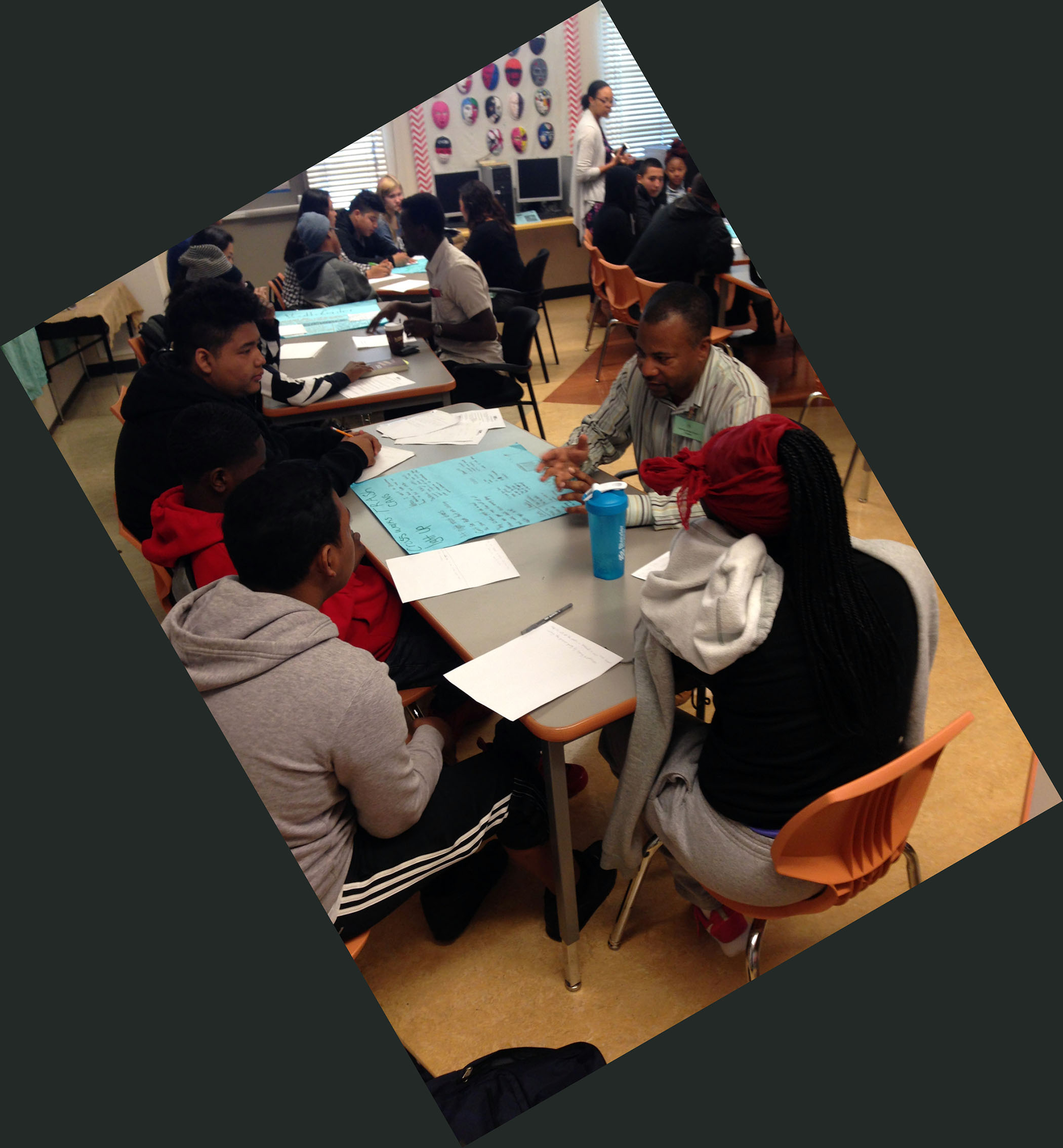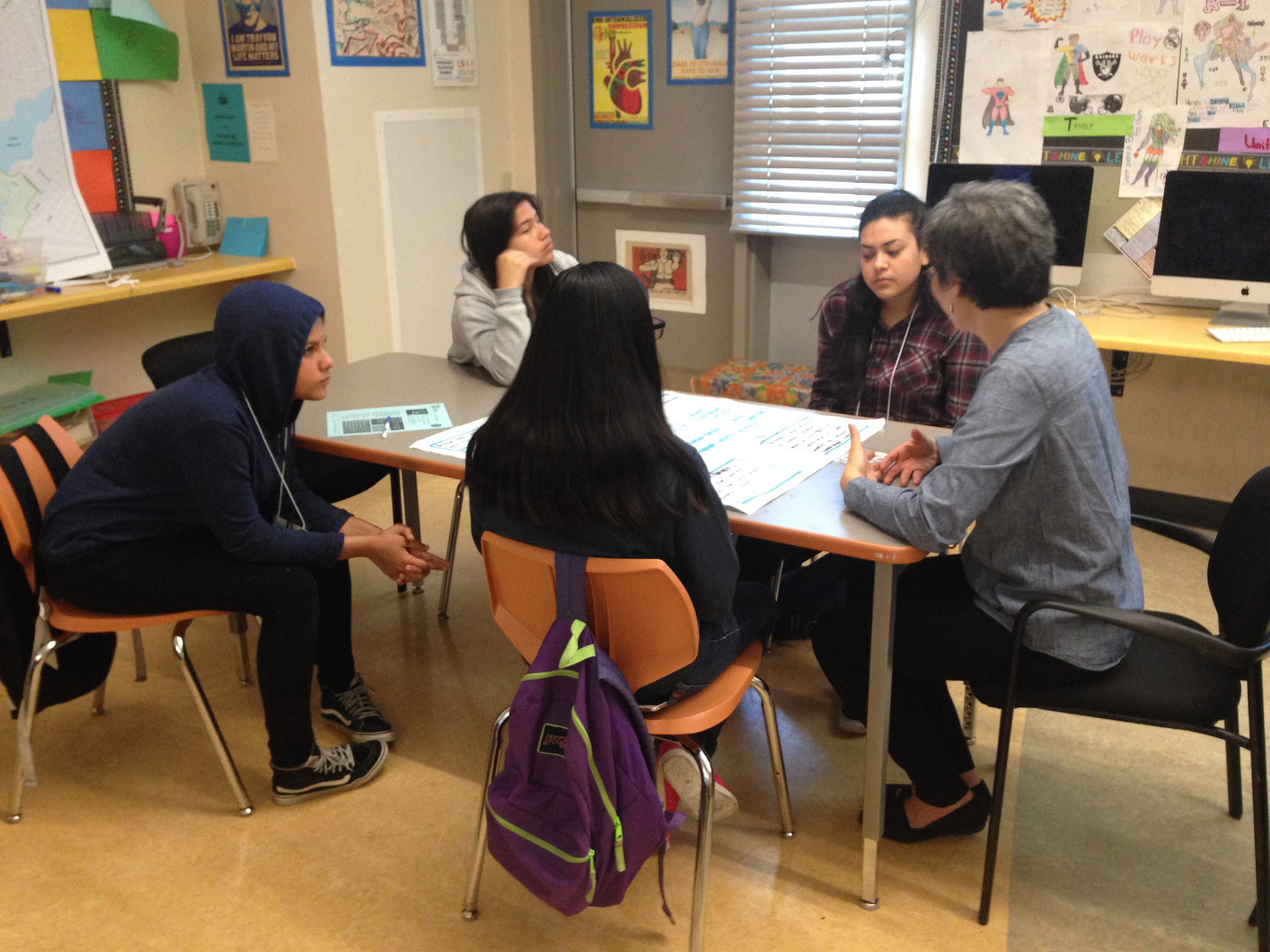Y-PLAN Expands Youth Outreach Through Professional Networks

"You can't be what you can't see."
This frequently cited quote from Marian Wright Edelman, founder of the Children's Defense Fund, refers to the importance of representation of women and people of color in media, educational materials, and professional careers.
For the Center for Cities + Schools (CC+S) at UC Berkeley, this call for representation and lifting young leaders of color has been central to promoting college and career readiness for participants in the Youth - Plan, Learn, Act, Now (Y-PLAN) initiative.
Y-PLAN is an educational methodology designed to challenge the status quo by inviting children and young people to participate alongside professional planners and other adults to transform policy landscapes and built environments. Partnerships with organizations such as the American Planning Association (APA) Diversity Task Force and the National Organization of Minority Architects (NOMA) allow students to see what they could become while actively participating in civic processes.

Marcus Adams, APA NorCal Diversity Committee member and Associate Planner at the City of Vallejo, meets with students at MetWest High School during their desk critique--during which students vetted their research-based proposals for Downtown Oakland. Photo courtesy Center for Cities and Schools.
Y-PLAN: Empowering Youth in Planning
Y-PLAN is grounded in over a decade of educational research and demonstrates a "double bottom line" of positive outcomes for students and communities. With unique perspectives, Y-PLAN students partner with civic leaders to follow a rigorous five-step methodology that reflects core participatory planning practices. The method builds the capacity of young people to effectively contribute youth-driven data and insight to the planning and policy-making process while also developing college, career, and community readiness skills.
Y-PLAN also builds the capacity of civic leaders to value and use youth insight to create better plans, policies, and healthier, more equitable, and joyful cities for everyone.
Built on the theory and practice of connecting community development and schools, CC+S has engaged over 12,000 young people in 75 community development projects across 10 cities in the United States and countries in Sub-Saharan Africa, Japan, and China. More than 90 percent of our student population are students of color from schools with a high percentage of free and reduced lunch programs (the current school poverty indicator).

Y-PLAN's five-step, research-based educational methodology. Photo courtesy Center for Cities and Schools.
APA Diversity Committee: Mentoring Future Planners
In the Bay Area, APA Northern California Diversity Committee co-chairs Miroo Desai and Cindy Ma have been key partners in expanding the network of planners of color who mentor and provide feedback to young people on their proposals for change. This important connection shows students that planning is a field growing in diversity and necessitates more people of color to enter the profession to achieve the goals of planning healthier, more equitable, and joyful cities.
Desai and Ma helped connect professional planners of color to high school classrooms to support students in developing research-based proposals for the Downtown Oakland Specific Plan. Alice Chen, a transportation planner and member of the California Planning Roundtable, heard proposals from students at MetWest High School in April.
"Seeing professionals who look like them gives them insights into what they could be and do to affect the communities that they live in," Chen said.
Allowing professionals to see students as authentic researchers and contributors to planning processes also has consequences.
"I am more cognizant of finding opportunities to engage youth at an even earlier age to be involved in the planning process," Chen explained. "The visit to the classroom also gave me insights into the youth perspective, who add such diversity and vibrancy to urban places, such as downtown Oakland, as more and more we are planning our cities for the growing youth, millennial, and aging or boomer populations."

Alice Chen, transportation planner and California Planning Roundtable member shares feedback with students at MetWest High School who are proposing more social services for the homeless in Downtown Oakland. Photo courtesy Center for Cities and Schools.
Y-PLAN Vision 2020: Strategic Goals Ahead
Moving forward, Y-PLAN's Vision 2020 Strategic Plan focuses on:
- expanding our reach through digital technology;
- strengthening existing partnerships in New York City, the San Francisco Bay Area, and across California;
- deepening policy areas to lift young people's impact on places they live, learn, and play.
Connecting young people of color to careers in planning and government through authentic interactions with diverse professional role models with whom they can identify is crucial to success in all three areas. It allows young people to not only imagine a healthier, more equitable, and joyful community but to believe they have the power to shape it.
A 10th-grade participant in this year's Y-PLAN Oakland shared her experience: "I felt like we were doing something really big: planning our future. What if they incorporate our ideas? That's what motivated me to do my very best."
Top Image: Students from Skyline High School's green academy consider the strengths, weaknesses, opportunities, and threats to a healthy and sustainable Downtown Oakland during a charrette. Photo by Michael Halberstadt, Silicon Valley Stock.


